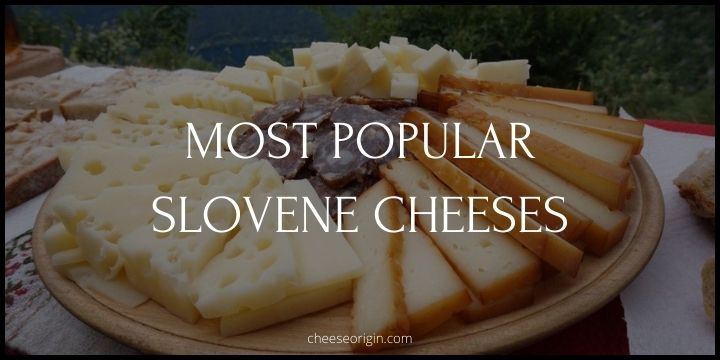10 Most Popular Cheeses Originated in Poland

Poland, a country renowned for its rich culinary heritage, is home to some of the most delectable cheeses in the world. Nestled within its diverse food culture is a tradition of cheesemaking that dates back centuries. Polish cheeses, with their distinctive flavors and textures, are a testament to this age-old craft, deeply entwined with the country’s history, geography, and way of life.
From the Pomeranian region’s semi-hard Pomorski to the matured Bursztyn from Skarby Serowara, Polish cheeses offer a palette of tastes that cater to every cheese lover. Each cheese tells a story – of the region it comes from, the people who crafted it, and the traditions they uphold.
The 10 Most Popular Polish Cheeses (BEST)
| Cheese Name | Short Description | Tasting Profile |
|---|---|---|
| Bundz | A light and creamy cheese made from sheep’s milk. | Mild, slightly tangy, and creamy. |
| Redykołka | Known for its unique flavor, this traditional Polish cheese is a popular choice. | Rich, savory, with a hint of smokiness. |
| Gołka | Originating from the Podhale region in southern Poland, known for its exceptional flavor. | Nutty and slightly sweet. |
| Bryndza Podhalańska | A white cheese made from sheep’s milk. | Salty, tangy, and crumbly. |
| Ser Koryciński Swojski | Distinctive-tasting cheese, it’s a popular choice among locals. | Tangy, slightly sweet, and semi-hard. |
| Oscypek | A smoked cheese made from sheep’s milk from the Tatra Mountains. | Smoky, salty, and robust. |
| Twaróg | Similar to quark or farmer’s cheese, it has its own distinct flavor. | Mild, slightly sour, and creamy. |
| Serek Wiejski | A popular white cheese in Poland. | Fresh, milky, and slightly tangy. |
| Bursztyn | Another popular white cheese in Poland. | Mild, slightly sweet, and buttery. |
| Pomorski | A cheese loved by many for its great taste. | Creamy, slightly nutty, and semi-hard. |
1. Bundz
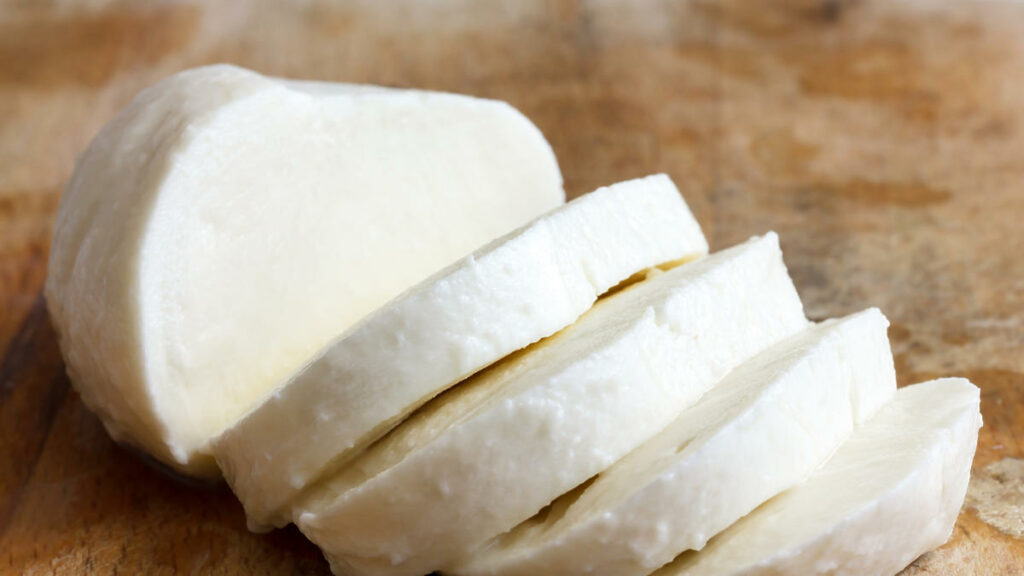
- Milk Type: Sheep’s Milk
- Taste: Mild, slightly tangy, and creamy
- Texture: Light and creamy
- Food Pairing: Fresh fruits, crusty bread, salads
- Wine Pairing: Light-bodied white wines like Sauvignon Blanc
Bundz is a traditional Polish cheese that’s celebrated for its delicate and creamy texture. It is made from sheep’s milk, offering a unique, mild flavor that’s slightly tangy yet incredibly smooth. This light cheese is a staple in many Polish households, often served with fresh fruits or crusty bread.
Its versatile profile also makes it a delightful addition to salads and other dishes. Bundz exhibits the rich culinary heritage of Poland, providing an authentic taste experience that captivates both locals and cheese enthusiasts worldwide.
2. Redykołka

- Milk Type: Cow’s Milk
- Taste: Rich, savory, with a hint of smokiness
- Texture: Semi-hard
- Food Pairing: Grilled vegetables, smoked meats
- Wine Pairing: Full-bodied red wines like Merlot
Redykołka is a distinctive Polish cheese that stands out for its rich and savory flavor profile. Traditionally made from cow’s milk, it carries a hint of smokiness that adds depth to its taste. The semi-hard texture of Redykołka makes it a versatile cheese that pairs well with a variety of foods, including grilled vegetables and smoked meats. Its full-bodied flavor also matches perfectly with robust red wines like Merlot.
Redykołka is more than just a cheese; it’s a testament to Poland’s vibrant dairy tradition, offering a unique gastronomic journey with each bite.
3. Gołka

- Milk Type: Cow’s Milk
- Taste: Nutty and slightly sweet
- Texture: Semi-hard
- Food Pairing: Crackers, fresh fruits, honey
- Wine Pairing: Medium-bodied white wines like Chardonnay
Gołka is a cherished traditional cheese originating from Poland, specifically associated with the region of Silesia. This unique cheese is crafted exclusively from cow’s milk, embodying a distinct flavor profile that sets it apart from other Polish cheeses. Gołka is characterized by its smoked quality, infusing it with a robust and savory taste that is both very salty and super tasty. The cheese’s shape also distinguishes it, differing notably from cheeses like Oscypek.
Produced in the pure mountain areas of Zakopane, known as Poland’s most well-known region, Gołka offers an authentic taste of Polish dairy tradition. It is enjoyed both straight from the mountains and in mini pieces, demonstrating its versatility. Whether served on a cheese platter or incorporated into various dishes, Gołka is a testament to Poland’s rich culinary heritage.
4. Bryndza Podhalańska
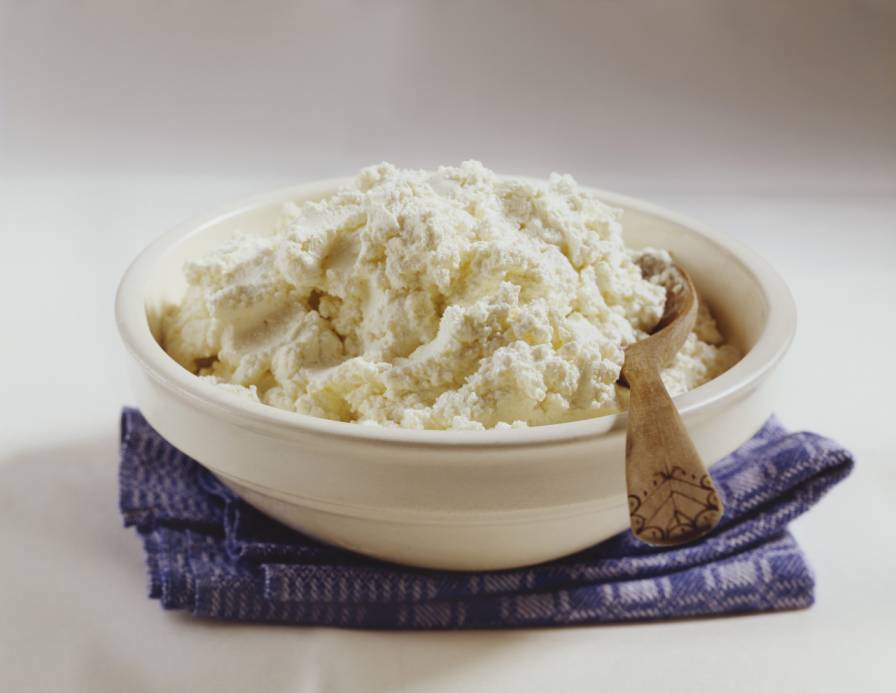
- Milk Type: Sheep’s Milk
- Taste: Salty, tangy, and crumbly
- Texture: Soft and crumbly
- Food Pairing: Bread, salads, potatoes
- Wine Pairing: Dry white wines like Riesling
- Read in-depth guide
Bryndza Podhalańska is a unique and historically significant Polish cheese hailing from the Podhale region. It’s a soft cheese made exclusively from the milk of the Polska Owca Górska, a breed of Polish Mountain Sheep. The process of making Bryndza Podhalańska is steeped in tradition, with production typically occurring between May and September.
The cheese has a white to cream-white or light aquamarine color, and it offers a salty and spicy flavor that is distinctively intense. Bryndza Podhalańska, which dates back to 1527, is not just popular in the Podhale and Tatra region but also in several mountainous countries of Eastern Europe. It’s a testament to Poland’s rich culinary heritage and cheese-making expertise.
5. Ser Koryciński Swojski

- Milk Type: Cow’s Milk
- Taste: Tangy, slightly sweet, and semi-hard
- Texture: Semi-hard
- Food Pairing: Bread, pickles, cold cuts
- Wine Pairing: Light-bodied red wines like Pinot Noir
Ser Koryciński Swojski is a renowned Polish cheese, known for its authentic and distinctive flavor. The cheese is locally made in the Korycin region of Podlasie, utilizing unpasteurized cow’s milk, which contributes to its unique taste. This cheese is often referred to as “swojski”, a term that suggests familiarity and homeliness in Polish.
Ser Koryciński Swojski boasts a rich history and exceptional taste attributes, making it one of the only three cheeses in Poland that have made it to the official list of traditional products. Its flavor profile is described as mild with a slight tanginess, adding a delightful complexity to the palate.
The production of Ser Koryciński Swojski involves only natural and fresh ingredients, adhering to a traditional recipe passed down through generations. The cheese is completely natural and does not contain any artificial preservatives, chemical enhancers, or colorants, which makes it a preferred choice for cheese enthusiasts who value organic and authentic dairy products.
6. Oscypek
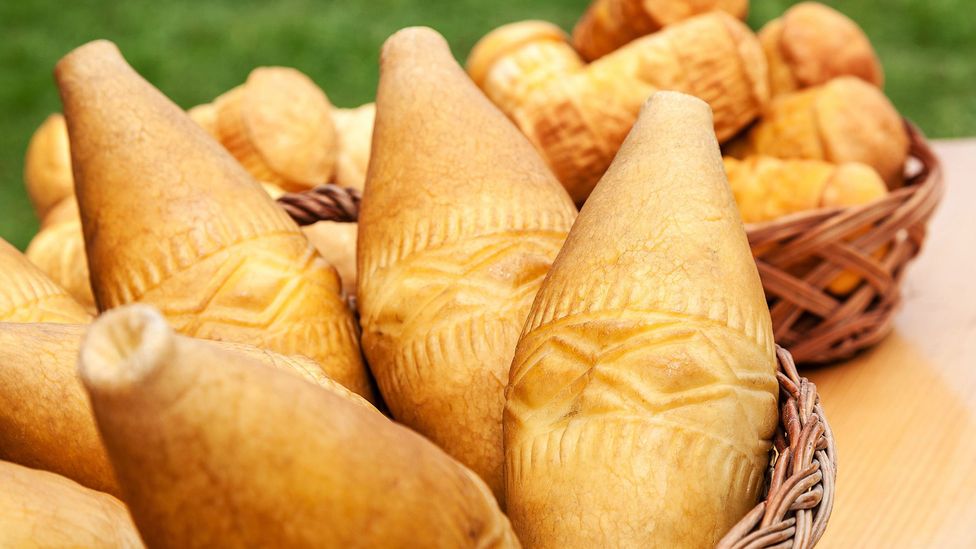
- Milk Type: Sheep’s Milk
- Taste: Smoky, salty, and robust
- Texture: Firm and dense
- Food Pairing: Apples, cranberries, dark rye bread
- Wine Pairing: Full-bodied red wines like Cabernet Sauvignon
Oscypek, sometimes spelled as Oszczypek, is a traditional Polish cheese that holds a special place in the country’s culinary heritage. This smoked cheese is made exclusively from salted sheep milk in the Tatra Mountains region of Poland, with fewer than 150 people qualified to help produce it, emphasizing its exclusivity and artisanal nature.
The production process for Oscypek typically takes place between May and September, reflecting its deep-rooted ties to the region’s seasonal rhythms. The cheese is characterized by its pronounced smokiness and strong taste, which have made it a favorite among locals and tourists alike. It’s a must-try when visiting the Polish mountains, particularly the city of Zakopane, widely recognized as the capital of the Polish mountains.
Oscypek’s unique flavor not only shines on its own but also lends itself to various dishes. Pan-fried Oscypek, for instance, is a popular starter featuring the cheese’s robust taste complemented by fried onions. Moreover, Oscypek can often be found at Christmas markets in Krakow, where it’s piled high in beautiful displays, further showcasing its significance in Polish culture.
7. Twaróg
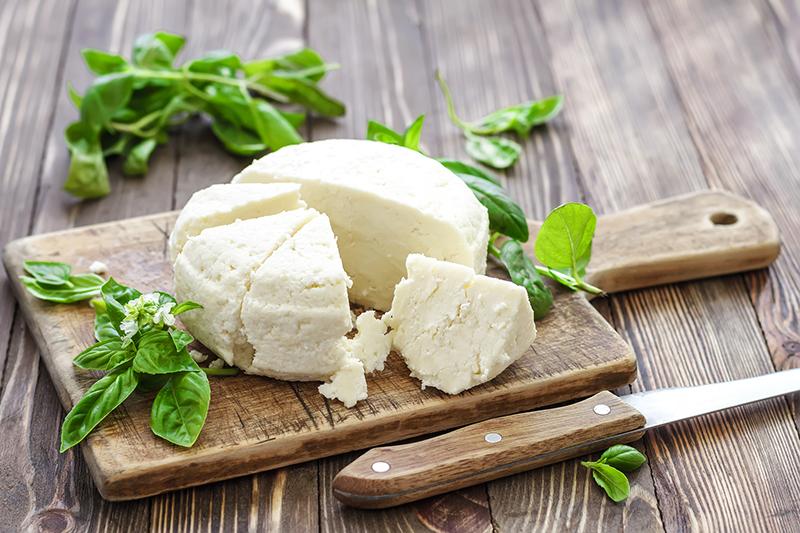
- Milk Type: Cow’s Milk
- Taste: Mild, slightly sour, and creamy
- Texture: Soft and spreadable
- Food Pairing: Bread, bagels, fruit preserves
- Wine Pairing: Light-bodied white wines like Pinot Grigio
Twaróg, also known as Polish Farmer’s Cheese, is a white fresh cheese that holds a significant place in Polish cuisine. It is made from whole milk, buttermilk, white vinegar, and salt, resulting in a firmer and drier variety of Quark. Twaróg is also referred to as biały ser (white cheese) or ser bialy, emphasizing its color and texture.
The production process of Twaróg requires about 72 hours and yields approximately 1 pound (500 grams) of cheese. Its elastic consistency and lumpy structure make it ideal for various culinary applications. Twaróg is often used in popular Polish dishes such as pierogi filling, and it also finds its way into traditional Polish desserts.
During summertime, Twaróg is often incorporated into a dish called “Twarożek,” highlighting its versatility across seasons. Its taste is unique and can be adjusted to personal preferences, leaning towards the savory or sweet side depending on the amount of salt added during the preparation process.
8. Serek Wiejski

- Milk Type: Cow’s Milk
- Taste: Fresh, milky, and slightly tangy
- Texture: Creamy and smooth
- Food Pairing: Crackers, fresh fruits, raw vegetables
- Wine Pairing: Dry white wines like Sauvignon Blanc
Serek Wiejski, commonly known as Cottage Cheese, is a popular Polish cheese that has been a household name since its introduction by OSM Piątnica in 1992. This cheese is celebrated for its high quality, excellent taste, and natural composition, free from preservatives and additives.
Serek Wiejski is a soft, mild white cheese characterized by its fine grainy texture and lumps, a result of being made from sour milk. It’s available in various weight options, including 200g and 500g packs, catering to different consumer needs. The cheese also comes in a lighter version, Serek wiejski lekki Piątnica 500g, which offers the same delightful taste but with less fat content.
This cheese is versatile and can be used in multiple culinary applications. Notably, it’s a common ingredient in traditional Polish dishes such as pierogi. However, it’s important to note that while Serek Wiejski is often compared to Twaróg, the two are distinct, with the former being more akin to the American invention of cottage cheese.
9. Bursztyn
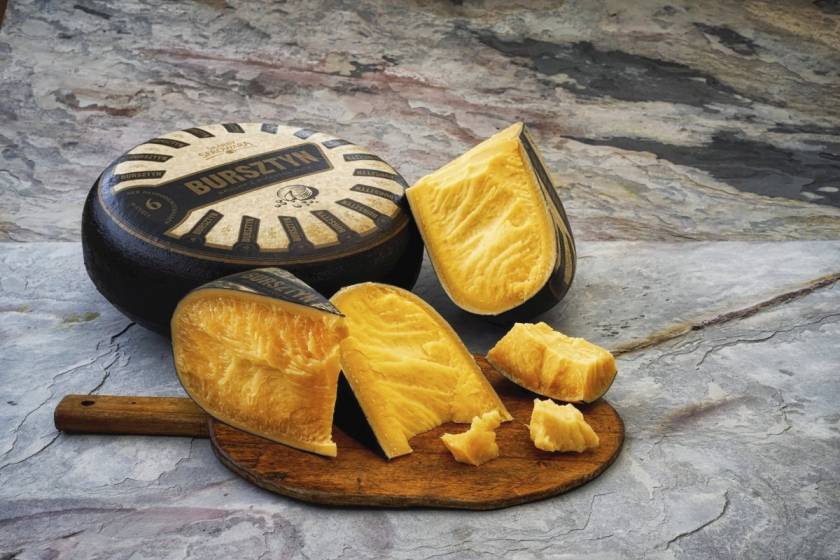
- Milk Type: Cow’s Milk
- Taste: Mild, slightly sweet, and buttery
- Texture: Semi-hard
- Food Pairing: Bread, pickles, cold cuts
- Wine Pairing: Medium-bodied white wines like Chardonnay
Bursztyn, which translates to ‘Amber’ in English, is a premium Polish cheese celebrated for its mature flavor and high-quality craftsmanship. It is a product of Skarby Serowara, a company known for its long-maturing cheeses, including Rubin (Ruby) and Szafir (Sapphire), collectively referred to as the Cheesemaker’s Treasures.
Introduced in 2002, Bursztyn is a hard, mature cheese made from cow’s milk, bearing a striking resemblance to traditional Swiss Gruyere in terms of taste and texture. Its unique flavor profile is attributed to a meticulously controlled maturation process that breathes life into this culinary delight.
Bursztyn cheese has a tender texture with a spicy note, adding a delightful twist to its overall taste. It is versatile, serving as a perfect grating cheese for pasta dishes and an excellent topping for homemade sourdough bread. Its excellence, akin to the precious gemstone it’s named after, has elevated Bursztyn to be one of the most popular cheeses in Poland.
10. Pomorski
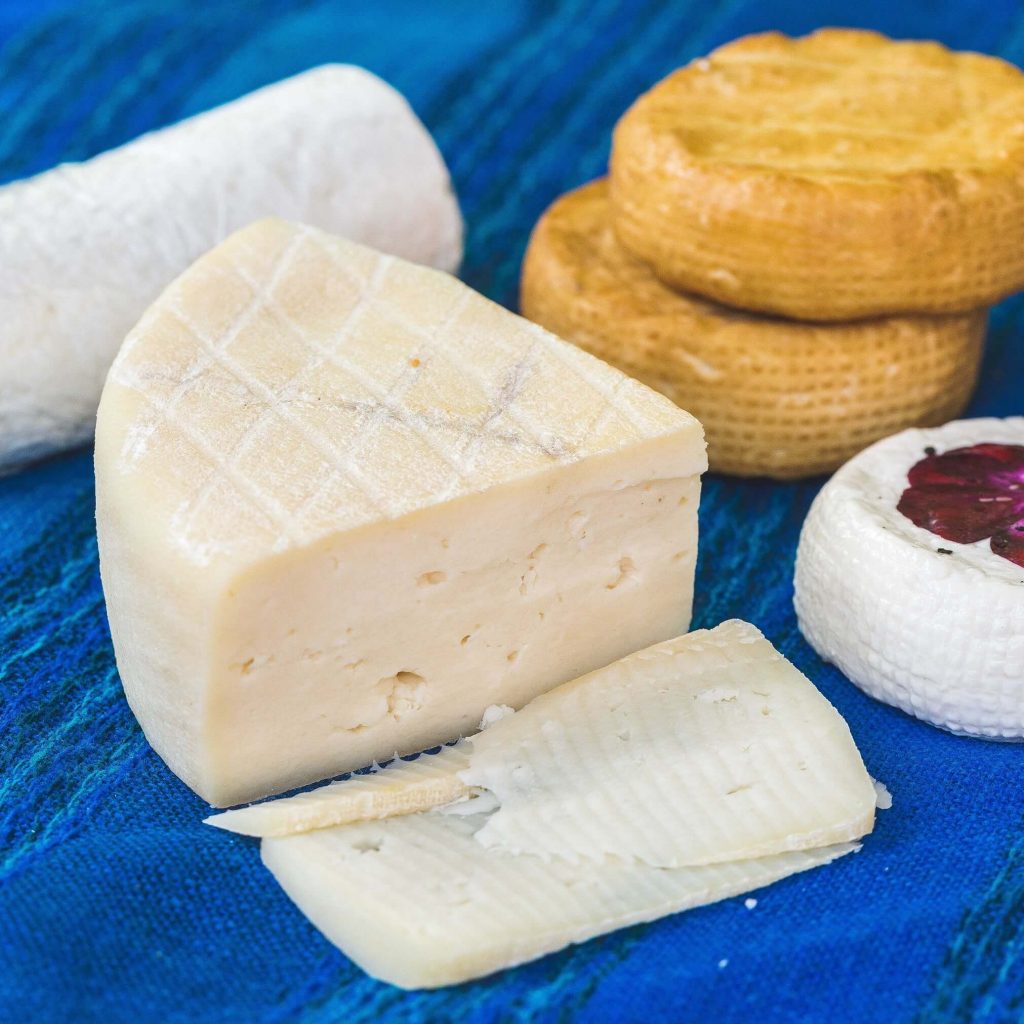
- Milk Type: Cow’s Milk
- Taste: Creamy, slightly nutty, and semi-hard
- Texture: Semi-hard
- Food Pairing: Nuts, dried fruits, bread
- Wine Pairing: Full-bodied red wines like Merlot
Bursztyn, which translates to ‘Amber’ in English, is a premium Polish cheese celebrated for its mature flavor and high-quality craftsmanship. It is a product of Skarby Serowara, a company known for its long-maturing cheeses, including Rubin (Ruby) and Szafir (Sapphire), collectively referred to as the Cheesemaker’s Treasures.
Introduced in 2002, Bursztyn is a hard, mature cheese made from cow’s milk, bearing a striking resemblance to traditional Swiss Gruyere in terms of taste and texture. Its unique flavor profile is attributed to a meticulously controlled maturation process that breathes life into this culinary delight.
Bursztyn cheese has a tender texture with a spicy note, adding a delightful twist to its overall taste. It is versatile, serving as a perfect grating cheese for pasta dishes and an excellent topping for homemade sourdough bread. Its excellence, akin to the precious gemstone it’s named after, has elevated Bursztyn to be one of the most popular cheeses in Poland.
Final Thoughts
As we conclude our gastronomic journey through Poland’s cheese landscape, it’s clear that this country’s cheesemaking tradition is as diverse and rich as its culture. From the creamy delicacies of Oscypek to the matured grandeur of Bursztyn, each cheese has shared a unique story – a testament to Poland’s culinary heritage.
These ten cheeses, while being the most popular, are just a glimpse into the extensive world of Polish dairy craftsmanship. Each region in Poland has its unique dairy delights, waiting to be explored and savored. The beauty of these cheeses lies not only in their taste but also in their history, the artisanal methods used in their creation, and the regional influences they carry.
So whether you’re planning a trip to Poland or just looking for your next cheese adventure, don’t forget to explore these Polish gems. They offer a delightful experience that goes beyond the palate, taking you on a journey through centuries-old traditions that continue to shape Poland’s culinary identity. Happy cheese tasting!
Also read:
- 10 Most Popular Cheeses Originated in Norway
- 10 Most Popular Cheeses Originated in the Middle East
- Top 5 Most Popular Cheeses in Lithuania
- 10 Most Popular Cheeses Originated in Italy
- 9 Most Popular Cheeses Originated in India
- 10 Most Popular Cheeses Originated in Greece
- 10 Most Popular Cheeses Originated in Germany



